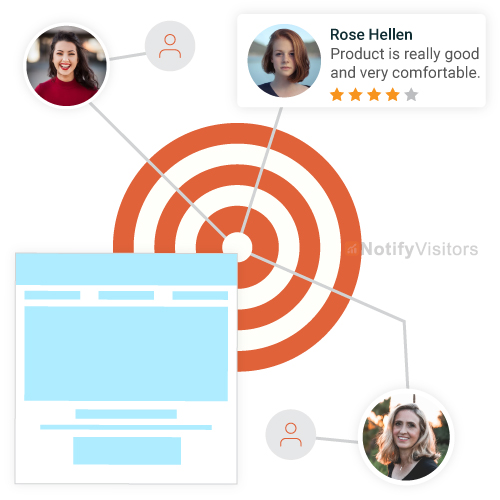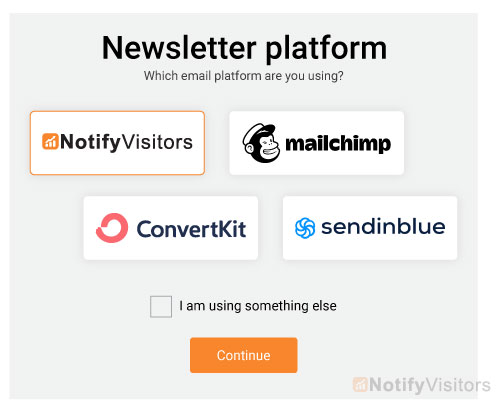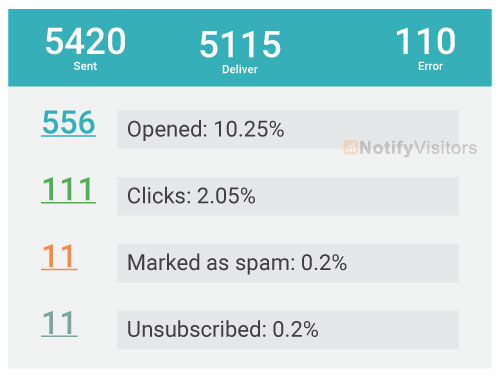Do you know how to create an email newsletter that converts subscribers into informed, engaged, and loyal customers?
Email newsletters are an important part of growing your business. You can reach your target audience directly with them and connect with all your leads.
In addition, most email service providers (ESPs) allow you to automate these campaigns.
You can expand your contact list and send more profitable personalized emails with an email newsletter.
Email marketing software allows you to send newsletters, promotions, and transactional emails to customers.
This blog will teach step-by-step how to create an email newsletter.
Contents
What is an email newsletter?
An email newsletter is a form of online communication that allows you to send product & business tips and updates.
People must join your email list to receive this update by specifying your email address. These users are called subscribers, leads, or contacts.
Organizations and individuals use email newsletters in a variety of ways. For example, companies use email newsletters to send customers product information, news, and the latest information.
Websites and blogs use email newsletters to update content, drive traffic and build loyal followers.
Why start writing an email newsletter?
Starting an email newsletter can help convert website visitors into subscribers. After signing up for the email newsletter, you can chat and bring it to your website.
With an email newsletter, you gain subscribers and customers daily.
People check their email multiple times a day. Most users who use a mobile device have their email messages open. Therefore creating an email newsletter becomes essential.
Let us now understand how to create an email newsletter.
How to create an email newsletter?
1. Explain the purpose of the Newsletter

You can do so many things for your business with email newsletters. Think about the purpose before writing your first Newsletter.
The goals may be any one of the following-
- Build a relationship with the audience: One of the biggest benefits of email newsletters is connecting with potential and existing customers to build a long-term audience. Do this by sharing valuable information with readers and providing background information about the business with customers.
- Education: Education can persuade potential customers to buy and retain existing customers. Newsletters are a great way to deliver educational content, educating customers on how to use your product.
- User feedback and research: Use your Newsletter for customer feedback and surveys. Instead of a no-reply email, use an email that allows readers to reply directly to your message.
2. Decide on an email newsletter strategy
One of the significant steps on how to create an email newsletter is by deriving an effective newsletter strategy. Developing an email newsletter strategy sounds complicated and overwhelming, but it means deciding on a few details about your newsletter before you start sending your emails.
The following information can help you create an effective newsletter strategy-
- Define your audience: Your audience is the people you are trying to reach and communicate with through your content. For marketers whose primary goal is to help businesses with email marketing, that audience is often potential customers and existing customers. So it becomes essential to define the characteristics of the audience.
- Audience Segmentation: Audience segmentation means sending specific emails to specific groups on your mailing list. It helps you target those people who may eventually become your customers.
- Set the tone of the message: Delivering timely newsletters is both an art and a science. It’s special when a new post lands in someone’s inbox because you want to ensure people get enough emails. Send the emails on the same days of the week. Consistency is the key.
3. Choose a platform for Newsletter

Each newsletter platform has its unique features, benefits, and pricing. You may not need all the available features to get started, but you should consider a platform with all the features you need on the go.
For example, if you’re starting a newsletter, you probably don’t need advanced features like email segmentation and A/B testing. However, your Newsletter can eventually become a full-fledged email marketing platform where these features can come in handy.
You may use email marketing platforms like NotifyVisitors
Here are some things to look for when choosing a newsletter platform:
- Built-in templates and customizable themes: You may choose a newsletter with customizable features like colors, fonts, and graphics using a drag-and-drop editor.
- Email personalization: Add a personal touch to emails with the ability to insert customer information into emails using tags.
- Email segmentation: Segment email recipients into separate lists to deliver more relevant content based on specific groups.
- Email testing: Send yourself test emails before sending the Newsletter to your entire list.
- Split testing: Split your mailing list to see what works best by sending one part of the Newsletter to half of your list and the other to the other half.
- Performance measurement and analysis: See metrics like open rates, click-through rates, and unsubscribes for every email you send.
4. Create a template and customize the theme of your newsletter
Beyond the content, you share in your newsletter and how you communicate with your customers, one of the best ways to stand out is to create a custom theme that your audience can identify.
An eye-catching design theme serves as a common brand identity for retailers. A consistent design theme helps create familiarity with the content you’re sending to customers.
5. Set the schedule

When you should send your newsletter is an important decision to make. However, there is no ideal time to mail newsletters. For starters, it’s helpful to commit to sending out a weekly or biweekly newsletter on a more convenient day of the week. Choose the most realistic days of the week to send your newsletter regularly.
The time and rhythm you can commit to regularly will often work as a more effective strategy.
6. Ask people to subscribe to your website or social media accounts
Reach out to subscribers who are already engaged with your business through your website, social media, and more. Gain subscribers by incorporating marketing and sales strategies.
Adding email signup forms to Shopify and other sites is usually easy and doesn’t require special coding skills.
7. Configure an automated mail flow
Most newsletters you send out are customized and feature interesting articles, relevant updates, and new promotions. However, some emails are generic, such as welcome and goodbye emails. These are your first and last impressions, and they must be accurate.
Thank the new subscribers who sign up, do what readers expect, and share appropriate links.
8. Follow the privacy policy and email best practices
Email addresses have their own rules and regulations to protect personal privacy. When building your newsletter email list, these privacy rules and anti-spam guidelines should be kept in mind.
- Comply with the General Data Protection Regulation (GDPR).
- Follow the anti-spam policy.
- Don’t buy mailing lists. Buying email addresses to promote your newsletter is not considered “optional” and is not GDPR compliant.
- The email should contain an unsubscribe link. Customers can opt out of receiving your email communications.
- Add company contact information. Include your company’s contact information at the bottom of all emails to comply with certain anti-spam rules.
9. Circulate the first newsletter
It can be exciting and scary to start sending your first email. But breaking down your newsletter distribution into simple steps will be an iterative process.
- Set your sender name and email address
- Choose the recipients
- Create your subject line and header text
- Create your own content
Here are some tips for creating your newsletter:
- Start with a strong opening
- Make sentences clear and concise
- Drive traffic to your website with a call to action (CTA)
- Use transparent formatting
- Add as much personalization as possible
- Check your email
- Send
10. Assess the analysis

Once you’ve successfully sent your email, it’s time to review it. Most email newsletter platforms measure email performance and include important marketing metrics such as open rates, click-through rates, unsubscribe rates, and more.
Wrapping Up
And that’s all for today! We hope you found this in-depth guide on how to create an email newsletter helpfully. The above-listed steps have everything you need to take your email newsletters to the next level.
For creating and sending great newsletters, schedule a demo with NotifyVisitors.
FAQs
1. What is an email newsletter?
An email newsletter is a form of online communication that allows you to send the product, business tips, and updates.
2. Which is the best platform to create and send a newsletter?
Platforms like NotifyVisitors, Mailchimp, Campaign Monitor, Sendinblue, etc., are the options you can consider. You can choose a platform based on the features, like customizable templates, email personalization, segmentation, testing, etc.
3. Can a professional-looking newsletter be created?
Absolutely! Email newsletter platforms usually have templates that look professional. For building such newsletters, you may customize the templates and change the colors, fonts, layouts, etc.
Also Read:
- Best Time to Send an Email Newsletter to Improve Campaign Performance
- How to Create an Email Newsletter for Shopify? {Step-by-Step Guide}
- 19 Best Email Newsletter Examples and Why They Work
- 14 Best Email Marketing Platforms [Features & Pricing Compared]
- 21 Cheap Email Marketing Software [Compared]

























 Email
Email SMS
SMS Whatsapp
Whatsapp Web Push
Web Push App Push
App Push Popups
Popups Channel A/B Testing
Channel A/B Testing  Control groups Analysis
Control groups Analysis Frequency Capping
Frequency Capping Funnel Analysis
Funnel Analysis Cohort Analysis
Cohort Analysis RFM Analysis
RFM Analysis Signup Forms
Signup Forms Surveys
Surveys NPS
NPS Landing pages personalization
Landing pages personalization  Website A/B Testing
Website A/B Testing  PWA/TWA
PWA/TWA Heatmaps
Heatmaps Session Recording
Session Recording Wix
Wix Shopify
Shopify Magento
Magento Woocommerce
Woocommerce eCommerce D2C
eCommerce D2C  Mutual Funds
Mutual Funds Insurance
Insurance Lending
Lending  Recipes
Recipes  Product Updates
Product Updates App Marketplace
App Marketplace Academy
Academy

